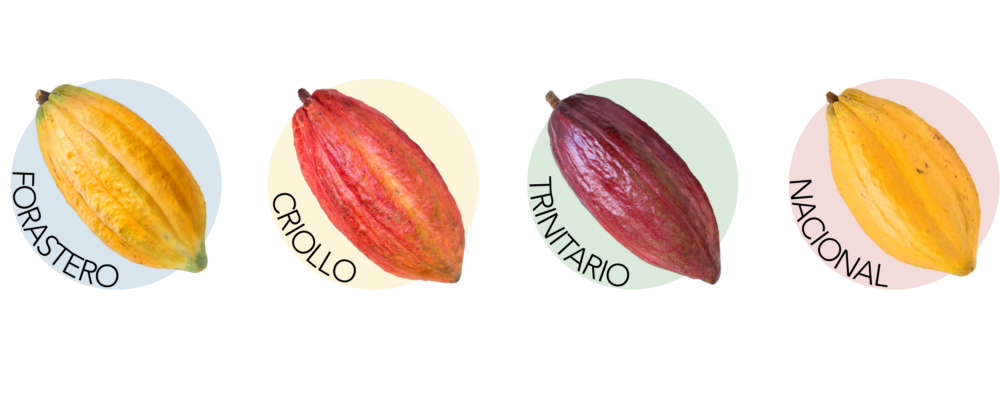
regions we support
Just as different grape types contribute to wine's diversity, various cocoa types are used for chocolate.
Within these, 1,000's of varietals and hybrids exist, each possessing unique characteristics and flavor profiles.
The four cacao pods shown above are the broad categories you might encounter, within each of these cacao categories, there are hundreds of unique varietals, each contributing to vastly different flavor profiles, yet the only chocolate most people have tried is a highly bitter varietal (CCN51). It’s no wonder, chocolate companies soak their beans in an alkali solution (dutching) and add a ton of sugar… they have to!
Terroir – the environment where the cocoa beans are grown and how they are cultivated & Fermented –
significantly influences the flavor, even
among the same type of cocoa bean.
Adding uncontrollable variables, like weather, results in a truly unique taste that is often different year over year.
TheSE are The Regions we actively support
They grow genetically interesting cacao, within various terroir’s, and often have unique fermentation styles; all of which creates distinct flavor profiles.
-

Madagascar
Madagascar, despite its modest footprint in the global cocoa sector, is celebrated for nurturing some of the most exceptional cocoa varieties known to the world. Such prestigious standing endears it to artisan bean-to-bar producers.
-

Côte d'Ivoire (Ivory Coast)
The Ivory Coast is a pivotal region in the global cocoa industry, producing an estimated 60% of the world's cocoa—a figure that highlights its significance but also underscores the challenges it faces. The region has often been spotlighted for the unfortunate incidences of child slave labor and environmental degradation, issues that have led many in the artisan chocolate community to distance themselves from sourcing cocoa from this area.
-

Vietnam
Cacao in Vietnam is currently undergoing a tremendous renaissance. One special region in the Mekong delta is Tien Giang. The land is extremely fertile, known for its alluvial soil, and has been used to grow rice, cashews, dragon fruit, mangos, guava, and coffee. Now it is becoming prized for its cacao!
-

Uganda
Rich chocolate, spice and dried fruit notes characterize this B Corp sourcing from majority women farmers.
The “Pearl of Africa," is a country renowned for its diverse landscapes, including the snow-capped Rwenzori Mountains, vast Lake Victoria, and abundant wildlife.
-

Dominican Republic
Zorzal Cacao is an agroforestry project of Reserva Zorzal -- a 1,019-acre private bird sanctuary and 130-acre organic cacao demonstration farm in the northern mountains of the Dominican Republic.
-

Tanzania
Prior to Kokoa Kamili, a single buyer dominated the area – the local arm of one of the world’s largest soft commodity trading houses. A sole buyer meant it had the power to set the price for cocoa, and farmers had little alternatives. Historically, farmers in the Kilombero Valley received some of the lowest prices for cocoa in the country, today they receive the highest.
-

Bolivia
In its upper reaches, known as the "Alto Beni," cacao grows wild, far removed from urban centers. Here, locals navigate the river by boat, periodically harvesting fresh cacao pods from the banks. This traditional method has led to the region's harvest being affectionately termed “wild cacao”. Alto Beni Bolivia is one of the southernmost cacao-growing regions in the Americas.
-

Mexico
Chontalpa Mexico is famous for its cacao production. Cultivation and consumption of cacao have been an integral part of people’s lives since the time of the Olmec civilization; many believe that the first human in history to taste chocolate was an Olmec living 3000 years ago in the swampy jungles of southeastern Mexico.
-

Vanuatu
Among the dense tropical forests and fertile volcanic soil, farmers cultivate cacao much as they have for generations. Around 90% of the trees are heirloom Amelonado, introduced in the late 1800s, producing cacao prized for its rich flavor and deep historical roots.




